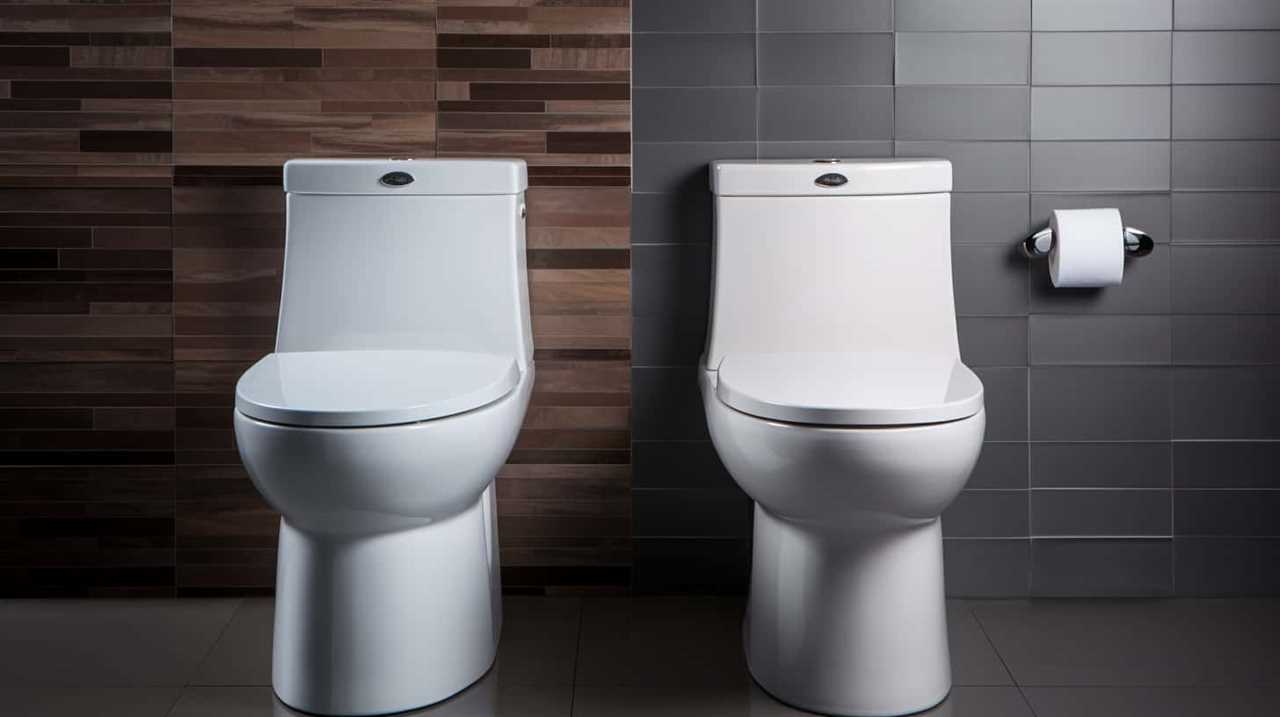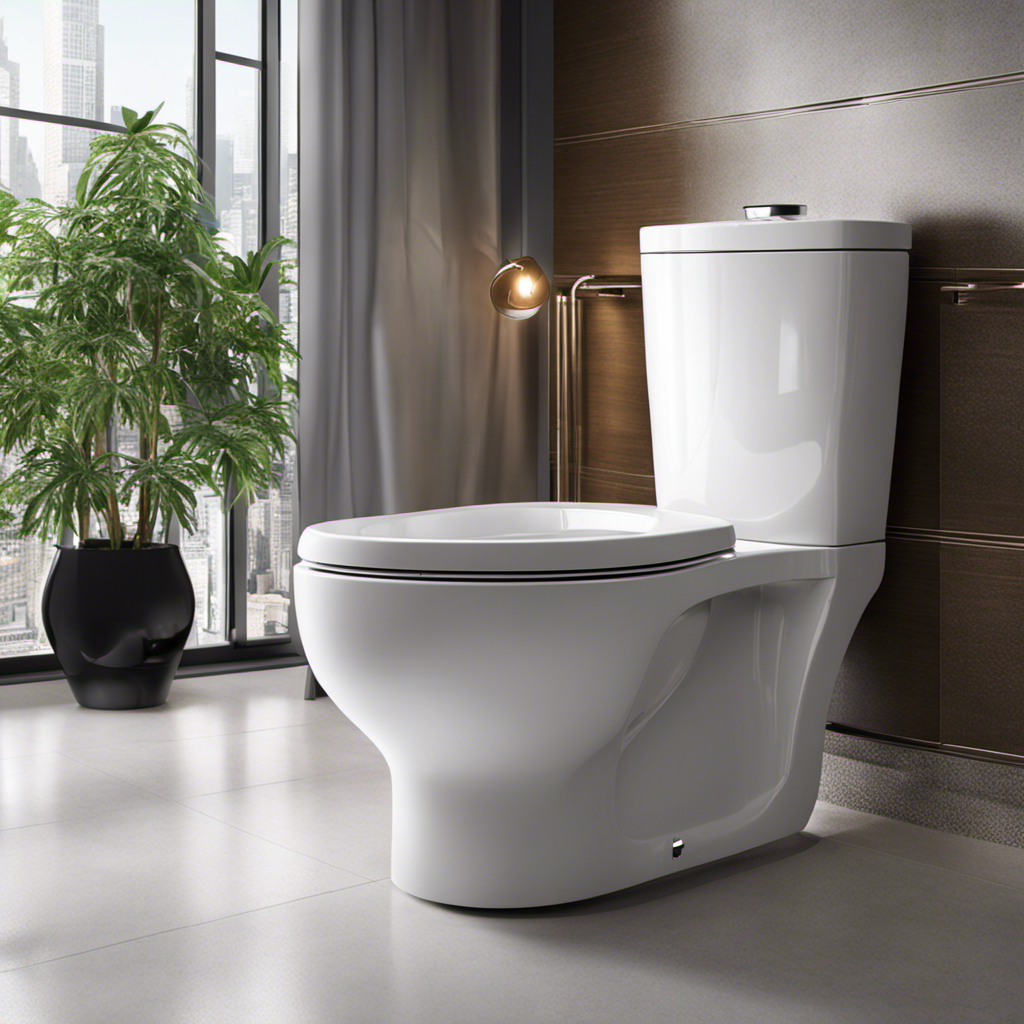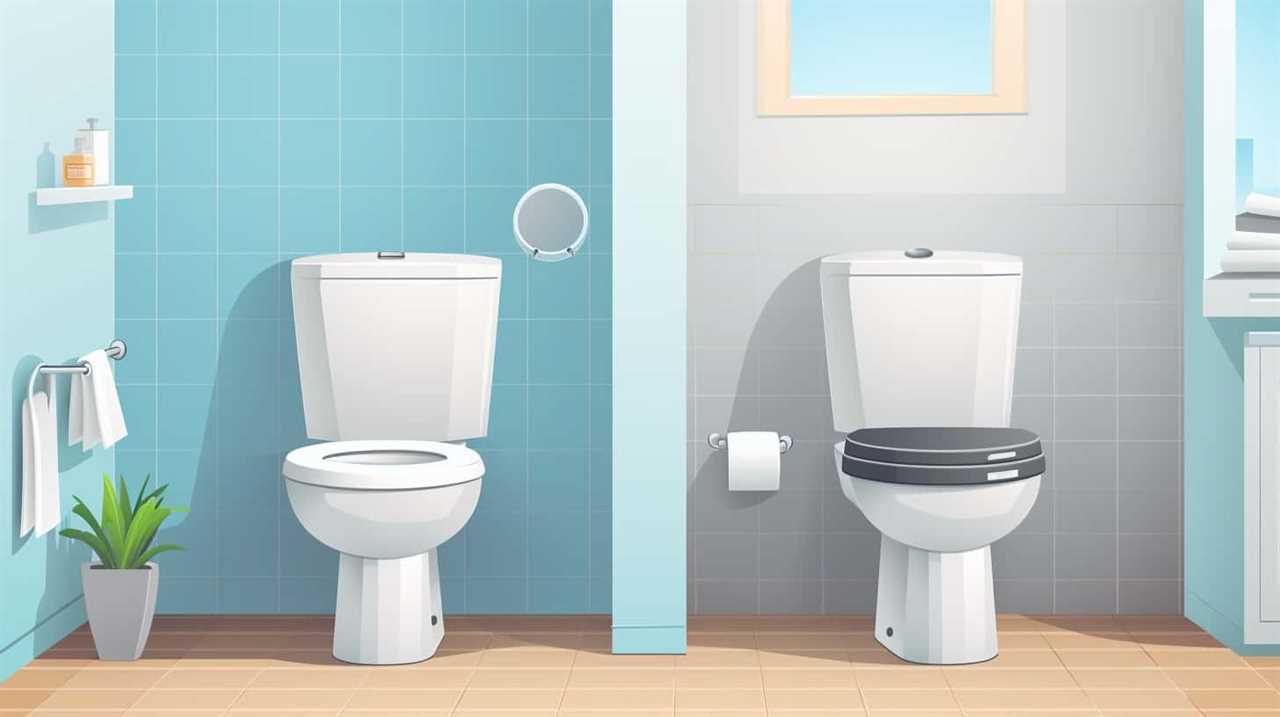Ladies and gentlemen, join us as we venture into the exploration of how toilet paper breaks down. Have you ever been curious about the process that ensues once that soft paper makes its way down the toilet?
Join us as we dive into the scientific realm, exploring the composition of toilet paper, its interaction with water, and the factors influencing its dissolvability.
Together, we will uncover the environmental impact and learn how to choose toilet paper that effortlessly dissolves, ensuring a mastery over the flushing process.
Key Takeaways
- Toilet paper is made by combining fibers derived from various sources with water and additives.
- The breakdown process of toilet paper is gradual during flushing, with water carrying the toilet paper and the force of water in the pipes breaking it down into smaller pieces.
- Factors affecting toilet paper dissolvability include thickness, brand, water temperature, and paper fiber composition.
- Water pressure and plumbing system compatibility play a significant role in the effectiveness of toilet flushes and the prevention of clogs and blockages in the sewage system.
The Composition of Toilet Paper
The composition of toilet paper includes fibers derived from various sources, which are combined with water and additives to create a soft and absorbent product. The manufacturing process of toilet paper begins with the selection of raw materials, such as wood pulp, recycled paper, or a combination of both. These materials are then processed to remove impurities and reduce them to a fine pulp.

Next, the pulp is mixed with water to form a slurry, which is then spread onto a wire mesh conveyor belt. As the water drains from the slurry, the fibers begin to bond together, forming a thin sheet. This sheet is then pressed between heated rollers to remove excess water and further strengthen the bonds between the fibers. The thickness of the toilet paper can be controlled by adjusting the pressure and temperature of the rollers.
After the pressing process, the paper is dried and wound onto large rolls. These rolls are then cut into smaller rolls or sheets, depending on the desired product. Finally, the toilet paper is packaged and prepared for distribution.
Understanding the Flushing Process
When considering the flushing process, there are three key points to understand.
Firstly, toilet paper breakdown is crucial for proper disposal and preventing clogs in the plumbing system.

Secondly, the impact of water pressure plays a significant role in effectively carrying away the dissolved paper.
Lastly, it’s essential to consider the compatibility of the toilet paper with the specific plumbing system to ensure optimal flushing performance.
These points are vital in understanding how toilet paper dissolves in water and its overall impact on the flushing process.
Toilet Paper Breakdown
Toilet paper undergoes a gradual breakdown process during flushing. This disintegration of toilet paper is an important factor to consider when discussing its environmental impact. To better understand this process, let’s delve into the intricacies of how toilet paper breaks down:

- When the toilet is flushed, the water carries the toilet paper along with it, initiating the breakdown process.
- The water quickly saturates the toilet paper, causing the fibers to weaken and separate.
- As the toilet paper moves through the pipes, the water’s force further breaks down the fibers, reducing it to smaller pieces.
Understanding this gradual breakdown of toilet paper is crucial for comprehending its environmental impact.
As we transition into the subsequent section about the impact of water pressure, we’ll explore how the force exerted by water affects the breakdown process.
Water Pressure Impact
Understanding the impact of water pressure is crucial in comprehending the flushing process. Water pressure measurement plays a significant role in determining the effectiveness of toilet flushes. The force exerted by the water helps to remove waste materials and toilet paper from the bowl and transport them through the sewer system. Higher water pressure results in a more forceful flush, ensuring efficient removal of waste. Additionally, the impact of water temperature should not be overlooked. Warmer water can enhance the breakdown of toilet paper, making it easier to dissolve and flush away. Conversely, colder water may cause toilet paper to clump together and resist dissolution. By considering both water pressure and temperature, we can optimize the flushing process for maximum efficiency.
| Water Pressure | Impact on Flushing Process |
|---|---|
| High | Ensures efficient removal of waste materials and toilet paper. |
| Low | May result in incomplete flushing, leading to clogs and blockages. |
| Optimal | Provides a balance between efficiency and water conservation. |
Plumbing System Compatibility
To understand the flushing process, we need to consider the compatibility of our plumbing system. The plumbing system compatibility refers to the ability of our pipes, drains, and sewage system to effectively handle the materials we flush down the toilet. This is crucial not only for the smooth operation of our plumbing system but also for minimizing the environmental impact.
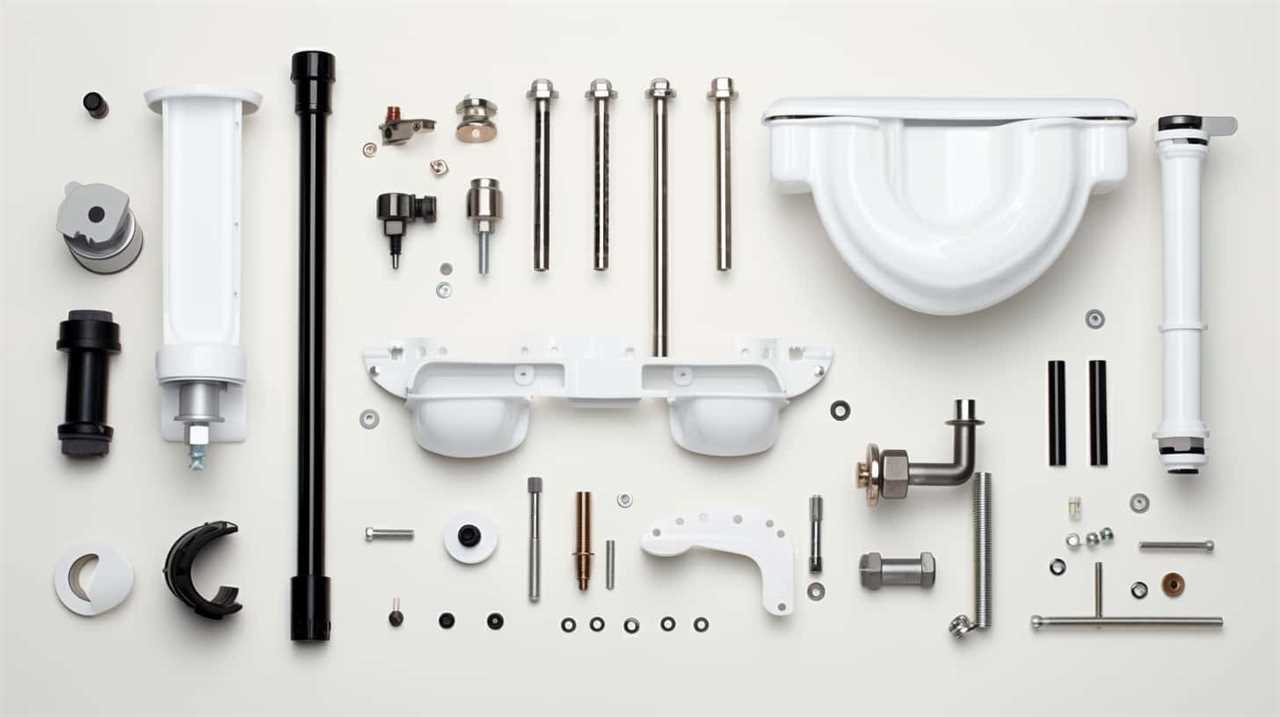
When it comes to plumbing system compatibility, two main factors come into play:
- Pipe Material: Different types of pipes, such as PVC, cast iron, or copper, have different levels of resistance and durability. These materials can handle varying degrees of pressure and are designed to withstand specific substances. Ensuring that our plumbing system is made of the appropriate pipe material helps prevent clogs, leaks, and other issues.
- Water Flow: The flow rate and pressure of our water supply impact the effectiveness of the flushing process. Insufficient water flow can result in incomplete removal of waste, leading to blockages and potential damage to the plumbing system.
How Toilet Paper Interacts With Water
As we explore the interaction between toilet paper and water, it’s crucial to understand the water absorption capabilities of toilet paper.
When toilet paper comes into contact with water, it begins to absorb the liquid, gradually breaking down the paper fibers.
This absorption process ultimately leads to the disintegration of the toilet paper, allowing it to be flushed away easily.

Water Absorption by Toilet Paper
Our experiments revealed that toilet paper absorbs water quickly and efficiently. The toilet paper’s high absorbency is due to its unique composition and structure. Here is a visualization of how toilet paper interacts with water:
- The moment water touches the surface of the toilet paper, its absorbency kicks into action.
- The fibers in the toilet paper rapidly draw in the water, creating a capillary action that pulls the liquid into its tiny crevices.
- As the water penetrates deeper, the interconnected fibers continue to absorb and hold the liquid, preventing any leakage or dripping.
This efficient water absorption is a result of the toilet paper’s ability to retain its structural integrity while retaining a significant amount of moisture.
This sets the stage for the subsequent section, where we’ll explore the disintegration of toilet paper when exposed to water.
Disintegration of Toilet Paper
When water interacts with toilet paper, it undergoes a process of disintegration. This disintegration refers to the breakdown of the toilet paper fibers when exposed to water. The time it takes for toilet paper to fully disintegrate can vary depending on several factors such as the thickness and quality of the paper. To determine the disintegration time of toilet paper, a toilet paper disintegration test is conducted. In this test, a sample of toilet paper is soaked in water and observed over a specific period of time. The disintegration time is measured from the moment the paper is submerged until it completely breaks apart into small fragments. The table below illustrates the disintegration time of different toilet paper brands:

| Toilet Paper Brand | Disintegration Time (in minutes) |
|---|---|
| Brand A | 3 |
| Brand B | 5 |
| Brand C | 7 |
Understanding the disintegration time of toilet paper can be crucial in determining its suitability for wastewater treatment systems and environmental impact.
Factors That Affect Toilet Paper Dissolvability
How quickly does toilet paper dissolve in water?
The dissolvability of toilet paper can vary depending on several factors. Here, we’ll explore the two main factors that affect toilet paper dissolvability: toilet paper thickness and toilet paper brand.
Toilet Paper Thickness:
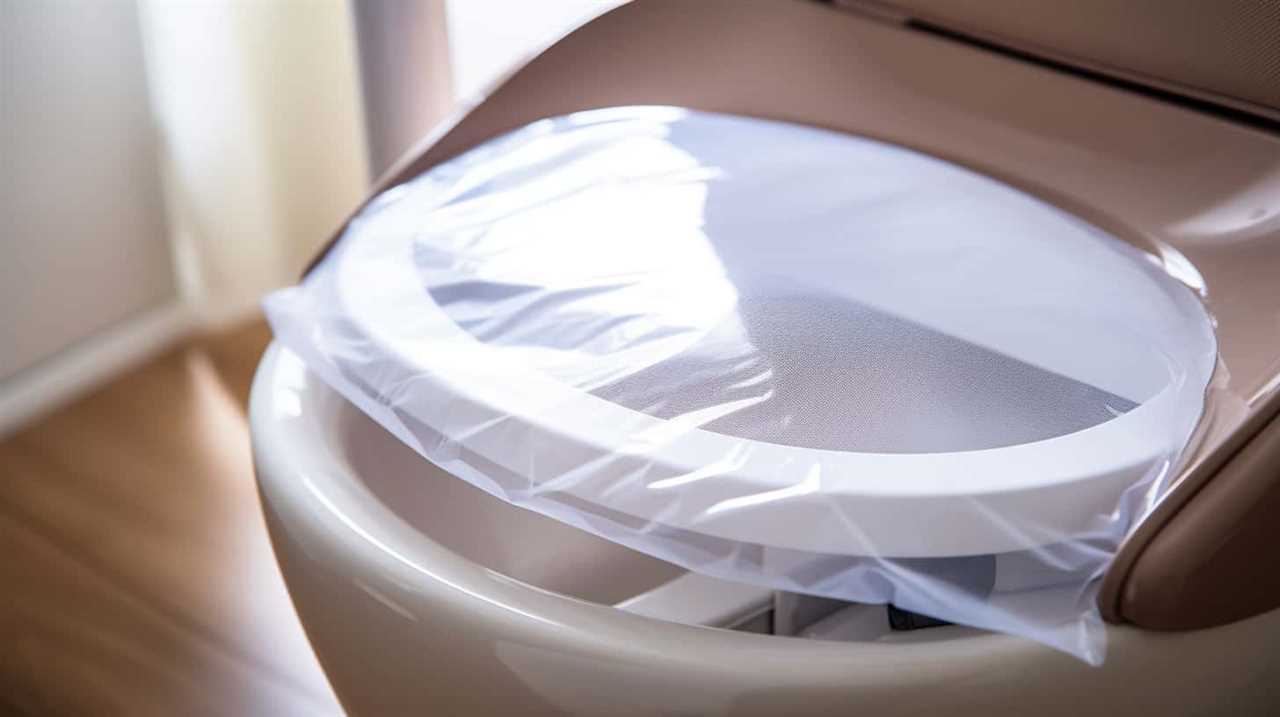
- Thin toilet paper: Thin toilet paper dissolves more quickly in water due to its lower density and reduced structural integrity. It breaks down easily, making it more suitable for systems with limited water flow or septic tanks.
- Thick toilet paper: Thick toilet paper takes longer to dissolve as it’s designed to be more durable. It can withstand more moisture, making it suitable for systems with higher water flow or plumbing that can handle slower dissolving times.
Toilet Paper Brand:
- Some toilet paper brands are specifically designed for quick dissolvability. These brands often use special manufacturing techniques or materials that promote faster breakdown in water.
- Other brands may prioritize strength and durability over dissolvability, resulting in longer dissolution times.
Understanding the factors that impact toilet paper dissolvability can help you choose the most suitable option for your specific needs. Whether you prefer thin or thick toilet paper, or have a specific brand in mind, considering dissolvability can contribute to a more efficient and hassle-free flushing experience.
Environmental Impact of Non-Dissolving Toilet Paper
What are the environmental consequences of toilet paper that doesn’t dissolve in water?
When non-dissolving toilet paper is flushed down the toilet, it can have a significant impact on environmental sustainability and wastewater treatment.

Firstly, non-dissolving toilet paper can contribute to clogging and blockages in the sewage system. Unlike toilet paper that dissolves easily, non-dissolving toilet paper can accumulate in pipes and obstruct the flow of wastewater. This can lead to sewage backups, overflow, and costly repairs for wastewater treatment facilities.
Furthermore, when non-dissolving toilet paper reaches wastewater treatment plants, it poses challenges for the treatment process. Treatment plants use a combination of physical, chemical, and biological processes to remove impurities from wastewater before it’s discharged back into the environment. However, non-dissolving toilet paper can resist these processes and remain intact, resulting in increased solid waste accumulation and reduced treatment efficiency.
The environmental consequences of non-dissolving toilet paper extend beyond the treatment plants. When solid waste containing non-dissolving toilet paper is released into water bodies, it can contribute to water pollution. This pollution can harm aquatic ecosystems, disrupt the balance of aquatic organisms, and degrade water quality.
Tips for Choosing Toilet Paper That Dissolves Easily
To ensure minimal environmental impact and efficient wastewater treatment, we should consider certain factors when selecting toilet paper that dissolves easily. Choosing the right toilet paper brand is crucial in maintaining a sustainable and eco-friendly bathroom routine. Here are some tips to help you make an informed decision:

- Look for toilet paper brands that are labeled as ‘septic-safe’ or ‘biodegradable.’ These brands are specifically designed to break down easily in water, reducing the risk of clogs and blockages in your plumbing system.
- Consider the ply count of the toilet paper. Single-ply toilet paper tends to dissolve more quickly than multi-ply options. Opting for a lower ply count can contribute to a more efficient wastewater treatment process.
- Seek out eco-friendly options that are made from recycled materials. By choosing toilet paper made from recycled fibers, you can help reduce deforestation and promote a more sustainable approach to personal hygiene.
Frequently Asked Questions
How Is Toilet Paper Made?
Toilet paper is made through a complex manufacturing process that involves several steps.
First, wood fibers are sourced from trees or recycled paper.
These fibers are then mixed with water and chemicals to create a pulp.
The pulp is then pressed and dried to form thin sheets of paper.

Finally, the paper is rolled into large rolls, cut into smaller rolls, and packaged for distribution.
The environmental impact of toilet paper production is a concern due to deforestation and water usage.
How Does a Toilet Flush Work?
When discussing how a toilet flush works, we need to consider the important factors of toilet bowl cleaning and water pressure control.
The toilet bowl cleaning process is initiated by the flush, which propels water into the bowl, removing waste and debris.

Water pressure control is crucial in ensuring an effective flush. By regulating the amount of water released and the force with which it’s expelled, the flush mechanism efficiently clears the bowl, leaving it clean and ready for the next use.
Can Toilet Paper Clog the Plumbing?
Can toilet paper clog the plumbing?
We must consider the toilet paper thickness and its impact on sewage systems.
Understanding if toilet paper dissolves in water is crucial.

By examining its ability to break down and disintegrate, we can determine its potential to clog pipes.
Analyzing the composition and structure of toilet paper allows us to assess its compatibility with plumbing systems.
Thus, it’s essential to investigate if toilet paper dissolves effectively in water to avoid any potential plumbing issues.
What Are Some Alternatives to Traditional Toilet Paper?
Eco friendly options for toilet paper include bidets and washable wipes.

Bidets use water to clean instead of paper, reducing waste and environmental impact.
Washable wipes are reusable and can be washed and reused multiple times, reducing the need for disposable toilet paper.
These alternatives offer a more sustainable approach to personal hygiene and can help reduce the amount of toilet paper that ends up in landfills.
How Long Does It Take for Toilet Paper to Dissolve in Water?
Toilet paper degradation rate and the environmental impact of its decomposition are important factors to consider. We can examine how long it takes for toilet paper to dissolve in water to gain a better understanding.

The rate at which toilet paper dissolves in water varies depending on factors such as the type of paper and the water temperature. By studying the degradation process, we can assess the impact on wastewater treatment systems and the environment as a whole.
Conclusion
In conclusion, our scientific analysis has revealed that toilet paper does indeed dissolve in water.
However, the dissolvability of toilet paper can be influenced by various factors such as the composition of the paper and the flushing process.
It’s crucial to choose toilet paper that easily dissolves to prevent clogging and minimize environmental impact.
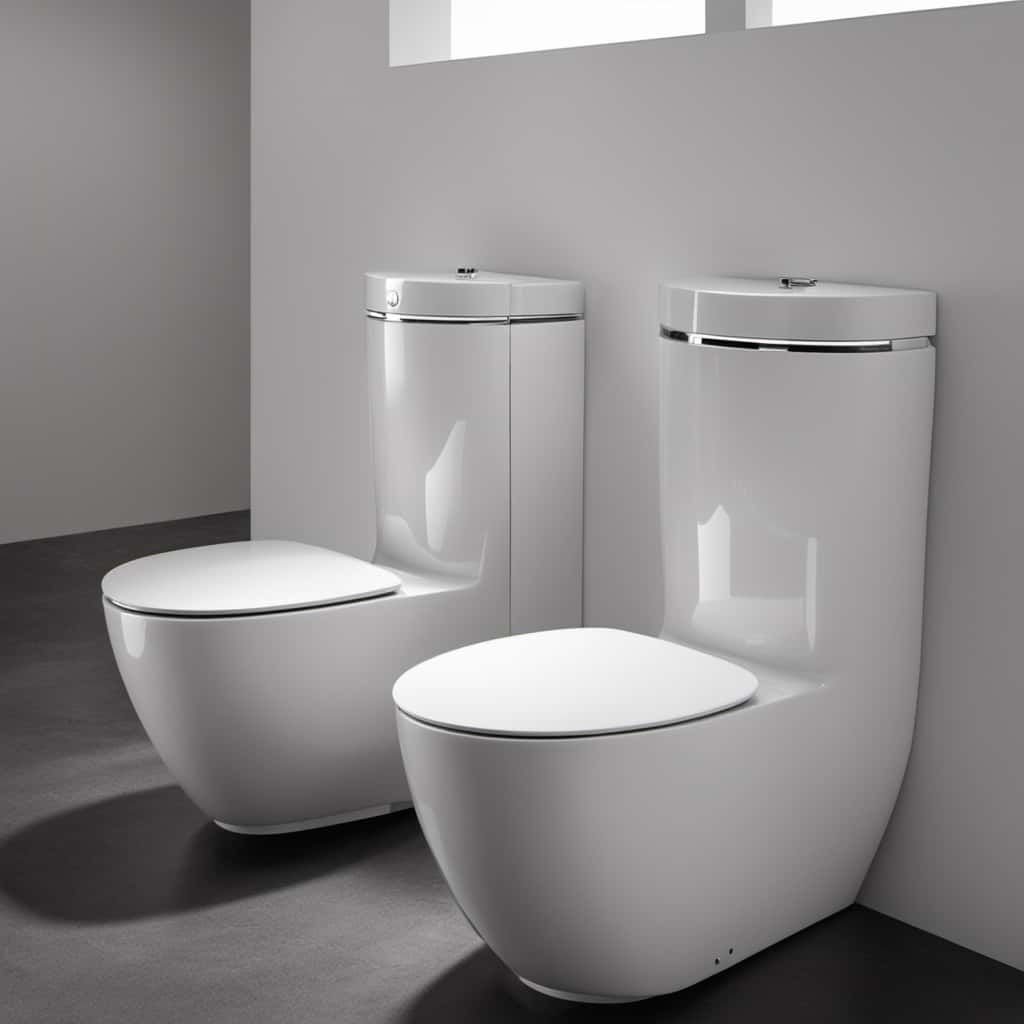
So, next time you’re in the bathroom, remember to select toilet paper that effortlessly vanishes like a magician’s trick in water.

